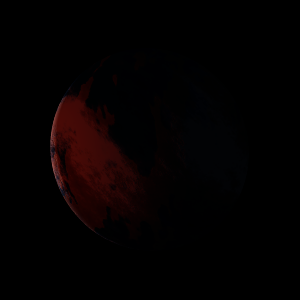|
|
Space Astro
|
Info for exoplanet "Renese Cef"
| Scientific (actual) data |
|---|
| Planet | GJ 229 A c |
| Planet status | Confirmed |
| Mass sini | 0.02495 |
| Orbital period | 122.005 |
| Semi major axis | 0.339 |
| Orbit eccentricity | 0.29 |
| Discovered | 2020 |
| Updated | 2020-01-09 |
| Omega | 101 |
| K | 2.15 |
| Publication | Published in a refereed paper |
| Detection type | Radial Velocity |
| Mass detection type | Spectrum |
| Star name | GJ 229 |
| Right ascension | 92.64° |
| Declination | -21.86° |
| Mag v | 8.125 |
| Star distance | 5.757 |
| Star mass | 0.58 |
| Star sp type | M1 V |
| Star temperature | 3564 |
| Wikipedia article | GJ 229 A c |
Back
| |
| Fictional info (?) |
|---|
| Suggested name | Renese Cef |
| Planet type | Cold planet |
| Renese Cef has been known to astronomers since the medieval. This planet is named after the deity Renese Cef, the demon of the sea.
Renese Cef is the site of Ars Mons, the biggest volcano and second-highest known mountain in its solar system, and of Valles Marineris, one of the largest canyons in its solar system.
Future astrobiology missions are planned, including the Renese Cef 1700 and ExoRenese Cef rovers.
The arid oceans are mostly known for its hostile and ultra advanced insects called the "Kuloz Ybi". They feed while hunting anything they find if it is available. They are believed to be related to Cuher En but have 6 tentacles and vary in size from 80 to 150 cm. The Kuloz Ybi are able to thrive at temperatures from -20 to -0°C and sometimes extreme gravity. |
| Estimated population | 1000000000 |
| Atmosphere | Methane | 65% |
| Oxygen | 34% |
| Water | 0.24% |
| Carbon dioxide | 0.00081% |
| Atmospheric pressure | 50 bar |
 |
| Moon | Riderod | Small almost round oceanic comet |
| Google search for Renese cef |
|
Website by Joachim Michaelis
|
|
|
|